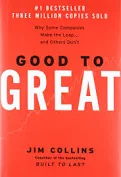Survival Tips for Blog Content Writers
“I realize how depressing publishing survival tips can sound,” Bob Eckstein starts out his “Top 10 Survival Tips for Publishing” article in Writer’s Digest. but it’s essential for writers to realize that all writers experience struggles. As a blog content writer, I actually found Eckstein’s survival tips inspiring more than boring, especially the four listed here:
Show Up.
“Show up daily, happy and ready to work.” The same advice, seems to me, applies to business blogging. I’ve learned that trumping elements of success in blog marketing such as technical expertise and writing skill, is what I dub “drill sergeant discipline”, which involves the simple but very difficult exercise of continuing to “show up” online.
Keep Learning.
“Your work can always improve. Spend a few minutes every week familiarizing yourself with the news in your genre.” A true business blog content writer never stops “learning the trade,” which, at Say It For You, we’ve found means getting ideas from everywhere and everyone, constantly looking to broaden our own experience and so as to share knowledge of our readers. “Content writers must expand their horizons to more challenging material than they typically read, paying special attention to sentence structure, word choice, and flow,” wordstream.com advises.
Don’t read reviews.
“Trust the experts among your inner circle and your inner monologue – there’s far too much negativity from critics.” Search engine optimization is the science part of the art-science mix inherent in blogging for business, and I frequently need to remind my clients (and often myself) that analytics are important, but they aren’t everything. As yoast.com (the WordPress plugin guide our blog content writers at Say It For You rely on) reassures us ” Above all, your blog post has to be a good piece of writing!
Be Ready to Pivot.
“Your book can be a movie script, Twitter feed, or animated series,” Eckstein tells authors. Of all marketing tactics, I’m convinced, business blogging is the best suited for implementing the lean startup concept of pivoting. In fact, that’s exactly what I love most about blogging as a communications channel. Each post can have a razor-sharp focus on just one story, one idea, one aspect of your business. With proper tracking, you quickly learn what’s working and what’s less effective; “pivoting” in the blog content does not involve any lengthy or costly new research.
Depressing? Far from it – survival on the internet is simply a matter of getting frequent, relevant, and passionate content “out there”!






Follow us online!